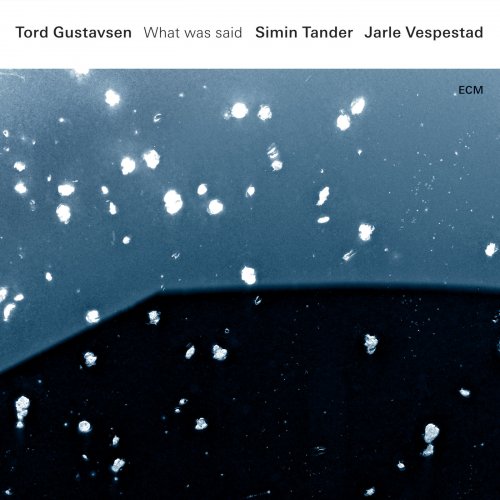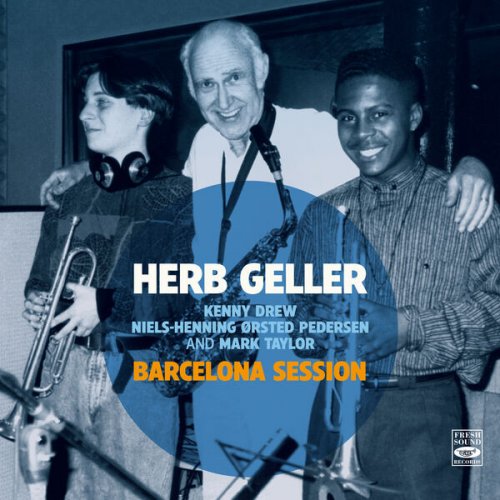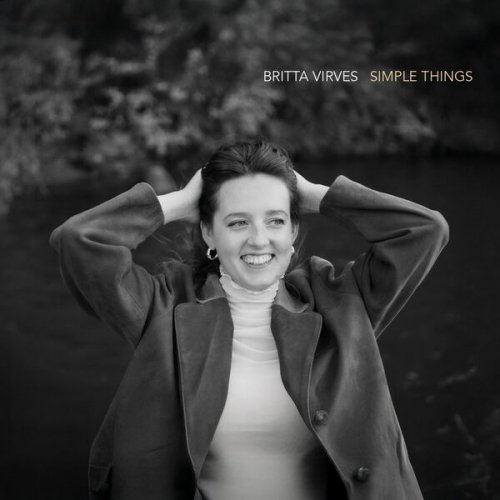Tord Gustavsen Trio - What Was Said (2016) Hi-Res

Artist: Tord Gustavsen Trio
Title: What Was Said
Year Of Release: 2016
Label: ECM
Genre: Jazz
Quality: FLAC 24bit-96kHz / FLAC (tracks) / Mp3 320 kbps
Total Time: 59:16
Total Size: 1.2 Gb / 245 Mb / 157 Mb
WebSite: Album Preview
Tracklist: Title: What Was Said
Year Of Release: 2016
Label: ECM
Genre: Jazz
Quality: FLAC 24bit-96kHz / FLAC (tracks) / Mp3 320 kbps
Total Time: 59:16
Total Size: 1.2 Gb / 245 Mb / 157 Mb
WebSite: Album Preview
1. Your Grief 02:45
2. I See You 05:08
3. Imagine The Fog Disappearing 06:20
4. A Castle In Heaven 04:46
5. Journey Of Life 07:21
6. I Refuse 05:38
7. What Was Said To the Rose - O Sacred Head 05:31
8. The Way You Play My Heart 03:01
9. Rull 03:02
10. The Source Of Now 04:19
11. Sweet Melting (duo) 03:20
12. Longing To Praise Thee 04:26
13. Sweet Melting Afterglow 03:39
Personnel:
Tord Gustavsen, Piano, Electronics, Synth Bass
Simin Tander, Voice
Jarle Vespestad, Drums
After three fine quartet albums that culminated in 2014's excellent Extended Circle, Norwegian pianist and composer Tord Gustavsen returns to the trio format of his earliest ECM outing. What Was Said isn't a look back at the standard piano trio format. German-Afghan vocalist Simin Tander joins the pianist and drummer Jarle Vespestad. Gustavsen's instantly recognizable sound ripples in ever widening circles around melodies often based in traditional Norwegian hymns, folk songs, and gospel music. This band incorporates improvisational elements into the core of each composition, and the singer is a co-conspirator in the moment of creation. Tander sings in Pashto, Norwegian, and English. In most cases, lyrics have been translated from their origins into another tongue. Tander's delivery, an expressive and disciplined, slightly smoky contralto, is full of mystery. Gustavsen's piano playing (and occasional subtle electronics) derives inspiration from her singing. He returns it by adding warmth, and a restrained brightness. He merges possibilities of harmony, time, and timbre. Vespestad's control allows him to shape even the most taut sounds into elements of color and illuminate their musical poignancy. On "Imagine the Fog Disappearing," 18th century Norwegian lyrics have been translated to Pashto. Tander inhabits them with gentle authority, as if she had written them. Vespestad bubbles under with brushed snare and Gustavsen responds to underscore an "otherness" that exists between lyric, translation, and jazz harmony. Rumi's "Your Grief" -- delivered in English -- juxtaposes jazz balladry and processional hymnody in a painterly fashion. Tander's singing feels experiential, not academic. "A Castle in Heaven," a Norwegian traditional song, emerges with a foreboding, lower-register chord and Middle Eastern modal fragments played by the right hand. When Tander begins singing in Pashto, Gustavsen reverts toward the composed melody and she bends the otherness of her notes toward him. The trio expresses its fullness on Rumi's "What Was Said to the Rose/O Sacred Head." Tander hums, whispers, drones, and shivers out the lyrics. It begins quietly, but swells with power and invention. Her voice guides its shifts in direction and dynamic. Her wordless solo in the bridge is breathtaking. She delivers Kenneth Rexroth's defiant poem "I Refuse" as a quiet yet anthemic elegy as Gustavsen frames it with a gospel melody. In "Rull," one of two piano and drum duets, tribute is paid to both the New Orleans and Southern gospel piano traditions. Another Rumi poem, "The Source of Now," combines jazz, modal blues, and elegant pop (think Nick Cave sung by Ute Lemper) as whispering snares, electronic ambience, and muted chord voicings resonate far beyond the simple harmonic boundaries. In the songs on What Was Said what this ensemble articulates between the notes is as important as their more formalized architectures. The trio's musical democracy delivers sensual beauty, emotional weight, and spiritual depth.


![Stan Getz Quartet - The Soft Swing (Remastered) (2025) [Hi-Res] Stan Getz Quartet - The Soft Swing (Remastered) (2025) [Hi-Res]](https://www.dibpic.com/uploads/posts/2025-11/1764250755_sgqs500.jpg)
![Green Cosmos - Morgenmusiken (2025) [Hi-Res] Green Cosmos - Morgenmusiken (2025) [Hi-Res]](https://img.israbox.com/img/2025-11/28/d5n9z9elov2edgunf6obgtn54.jpg)
![Bebel Gilberto - Tanto Tempo (25th Anniversary) (2000) [Hi-Res] Bebel Gilberto - Tanto Tempo (25th Anniversary) (2000) [Hi-Res]](https://www.dibpic.com/uploads/posts/2025-11/1764244651_wpqy2u7t74kay8b7unxm0f48q.jpg)
![Stefano Boggiani - Andvake (2025) [Hi-Res] Stefano Boggiani - Andvake (2025) [Hi-Res]](https://www.dibpic.com/uploads/posts/2025-11/1764304210_cover.jpg)
![Adrian Sherwood, African Head Charge, Speakers Corner Quartet - Barbican Heights (2025) [Hi-Res] Adrian Sherwood, African Head Charge, Speakers Corner Quartet - Barbican Heights (2025) [Hi-Res]](https://img.israbox.com/img/2025-11/25/gjr8pars1n20pfhk95wy7zw5j.jpg)
![Mark Lettieri & WDR Big Band - Mark Lettieri Group Meets WDR Big Band at Studio 4 (2025) [Hi-Res] Mark Lettieri & WDR Big Band - Mark Lettieri Group Meets WDR Big Band at Studio 4 (2025) [Hi-Res]](https://www.dibpic.com/uploads/posts/2025-11/1764152216_ojgcpstr4bscb_600.jpg)
![Studnitzky - KY! (2025) [Hi-Res] Studnitzky - KY! (2025) [Hi-Res]](https://www.dibpic.com/uploads/posts/2025-11/1764168357_hff2etgxpy7ha_600.jpg)